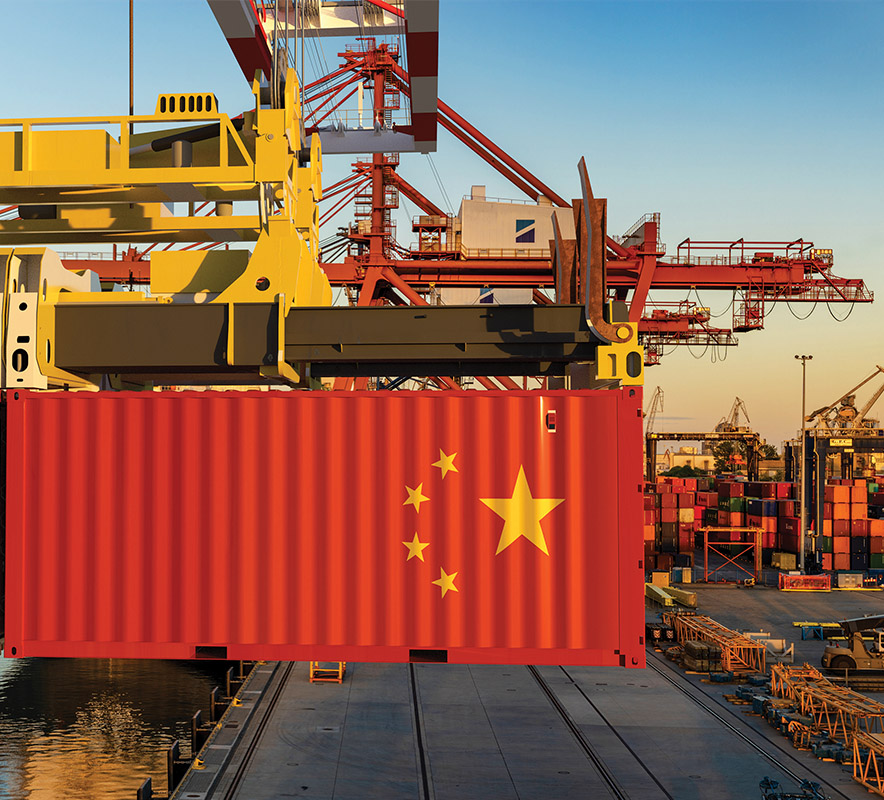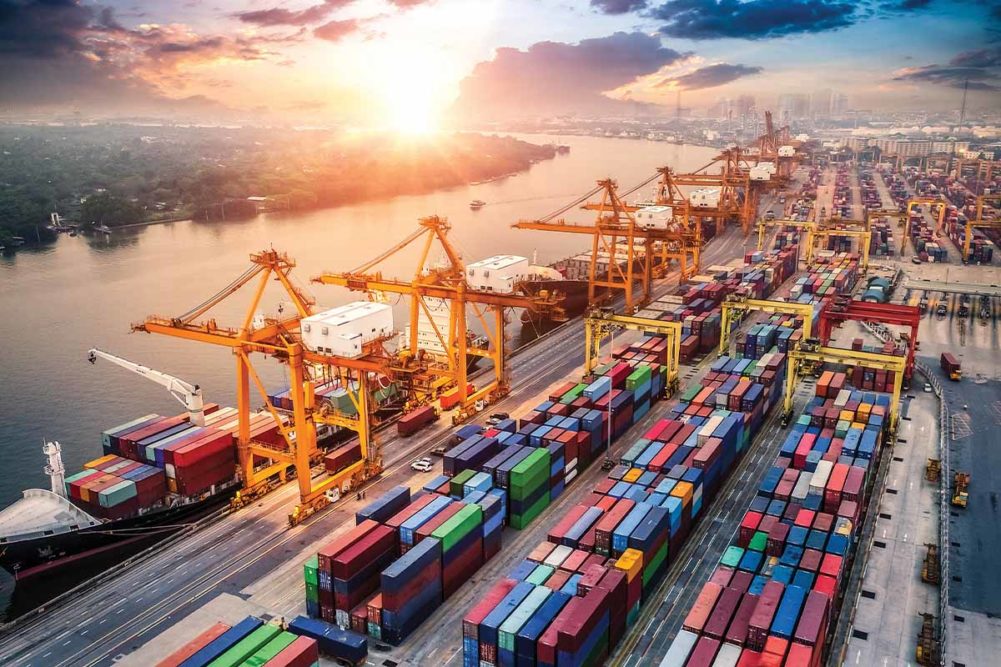This article was published in the November 2023 issue of Pet Food Processing. Read it and other articles from this issue in our November digital edition.
Beyond the country’s shores, there lies an expansive market that US pet food manufacturers are tapping into. The global appeal of American-made pet foods cannot be understated.
In 2022, the US exported a staggering $2.48 billion worth of dog and cat food, highlighting the international demand for American pet food products and the industry’s significance on the global stage. China, a major player in global trade, stands out in this context. With US pet food exports to China reaching $264 million in 2022, it solidified its position as the second-largest export market. This year has shown even more promise; by July, exports to China surged by 55% compared to the same timeframe in 2021.
Such numbers not only emphasize the growing appetite for US pet foods in China, but also the vital role that exports play in the financial health of US pet food manufacturers, which brings into focus a related and crucial aspect — the need for a robust and resilient supply chain, especially when it comes to exports. The complex weave of suppliers, manufacturers, distributors and retailers means any disruption, however localized, can ripple through the system with considerable impact.
Given the recent supply chain disruptions at West Coast ports, the potential threats to port efficiency, and the United States’ dependency on imported vitamins, the resiliency of the supply chain has never been more critical for the US pet food industry.

International demand for US pet food continues to increase. In 2022, the United States exported $2.48 billion of dog and cat food overseas, with $264 million worth of exports going to China.
|
West Coast ports
Recent developments at West Coast ports have sharpened the American Feed Industry Association’s (AFIA) focus on the importance of supply chain stability. The International Longshore and Warehouse Union (ILWU) recently ratified a new labor contract with its waterfront employers, which promises to bring enhanced labor stability, potentially reducing the unpredictability of cargo movements. This development is significant for various industries, including pet food, that rely heavily on these trade ports.
Historical context underscores the significance of this ratification. In the past, strikes and slowdowns have posed challenges, caused massive disruptions, led to the diversion of shipments and, ultimately, created unreasonable and costly delays that have hampered US pet food manufacturers’ ability to ship to overseas markets.
Additionally, when one thinks about the hundreds of ingredients that go into pet foods, US pet food manufacturers rely on the import of several micro-ingredients. Certain critical pet food ingredients, such as vitamins, can only be sourced abroad and, therefore, we are dependent upon the supply chains necessary for their transportation around the world. An AFIA member recently described these disruptions as, “…a domino chain of impact that negatively impacts our operations with real financial costs associated that we have to absorb.”
“The resiliency of the supply chain has never been more critical for the US pet food industry,” Tumbarello said.
Interruptions at California’s Los Angeles and Long Beach ports can result in cascading effects, with products facing delays or accumulating in warehouses, increased warehouse expenditures, and potential lost sales. While the AFIA believes the contract agreement is a move in the right direction, it is essential that the industry remains vigilant when labor relations are involved, be they at ports, on rail or otherwise.
Combined with external factors, such as regulatory changes or global trade tensions, situations like this can evolve quickly. Considering that, the US pet food industry has reasons to be optimistic; a more stable port operation can lead to better planning, forecasting and overall supply chain efficiency. However, continued monitoring and contingency planning remain crucial to navigate any unforeseen challenges effectively, and agriculture must speak up when challenges arise.
Port efficiency under threat
Amid the unfolding dynamics at the two West Coast ports, a new layer of complexity has been introduced. In a recent letter to the mayors of Los Angeles and Long Beach, the AFIA and a number of businesses across agriculture and other sectors expressed grave concerns over the potential implementation of an Indirect Source Rule (ISR) by the South Coast Air Quality Management District (SCAQMD).

Interruptions at California’s Los Angeles and Long Beach ports threaten a domino effect that can adversely impact industries, like pet food, which rely on those trade ports to ship products and ingredients.
|The ISR aims to limit the import and export of goods from these ports, and its ramifications could be far-reaching. One primary concern is the effect it would have on maintaining the flow of goods at the port. The SCAQMD staff’s initial proposal points toward volume caps on port activities, which could hinder the delivery of essential imported goods, including critical components for various industries and medical supplies. Moreover, it could stifle the export of US-manufactured products and agricultural outputs.
The AFIA encourages the mayors to delve deep into the proposed rule’s implications and reconsider its potential enactment. As global supply chains grow ever more intricate, such decisions carry weight, not only locally but also on the international stage.
The vitamin dependency quandary
Another threat that looms large is the US animal food industry’s dependency on imported vitamins, notably from China. The United States relies on China for human and animal vitamins and alternative sources are mostly nonexistent. In many instances, even if alternative suppliers exist, they simply cannot match China’s vast production capabilities or scale.

A looming supply chain challenge that threatens pet food production is the US industry’s dependency on imported vitamins, most of which come from China
|Consider that a staggering 94% of vitamin B6 and over 91% of vitamin C is imported from China. Over 78% of all US vitamin imports come from China. According to recent data from Feedinfo, in 2022 China produced 73% and 62% of the world’s total feed-grade vitamin A and E respectively, and a staggering 94% of the total feed-grade vitamin B2. There simply is not enough global production capacity outside of China to meet US demand should there be a disruption in China’s vitamin supply.
This heavy dependence not only raises eyebrows about supply chain vulnerabilities, but also emphasizes the critical role that China plays in the nutritional landscape of American animal feed and food security. These vitamins are critical components in many pet food formulations, ensuring America’s pets get the nutrition they need.
Any logistical issues, trade disputes or other disruptions in China could lead to shortages in the US market. The AFIA, along with its members, are concerned that China’s influence on our vitamin supply makes the industry extremely vulnerable, which is one reason the association is working hard to impress upon policymakers the need to:
- Invest in domestic vitamin production facilities and research to reduce foreign dependence;
- Encourage public-private partnerships, which can be pivotal in scaling up domestic production capabilities;
- Develop opportunities with other vitamin-producing nations to increase their domestic production capabilities;
- Establish an interagency task force to assess the vitamin supply chain and formulate long-term strategies.
The US pet food industry, given its unique challenges and dependencies, must prioritize supply chain resiliency. From labor agreements at ports to diversifying vitamin sources and actively participating in regulatory discussions, every step taken toward a more robust supply chain ensures our pets continue to receive the nutrition they need, when they need it.
“The United States relies on China for human and animal vitamins and alternative sources are mostly nonexistent,” Tumbarello said.
The AFIA is committed to exploring many facets of supply chain improvement in support of a safe supply of food for pets. As the global landscape continues to evolve, those in the industry must remain proactive, adaptive and forward-thinking because the wellbeing of our furry friends — and the health of our industry — depends on it.
Gina Tumbarello is the senior director of global strategies, policy and trade for the American Feed Industry Association.
Read more about supply chain topics affecting the industry on our Operations page.



